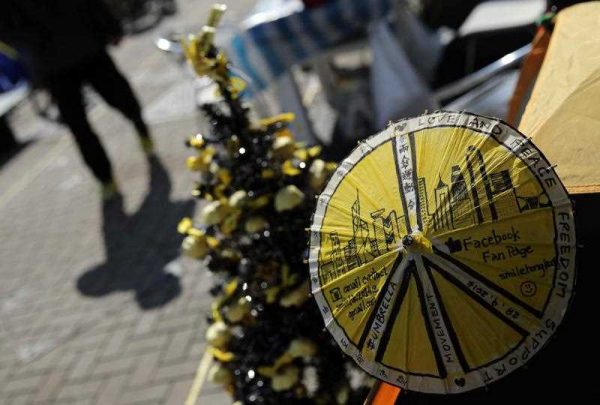The Hong Kong government has resumed its five-step consultation process for the 2017 elections and is still working within the framework of Beijing’s preapproved Chief Executive candidate list. But it would be short-sighted to write off the Umbrella Movement as a failure on this count alone — on three counts it provides three important lessons for the future.
First, maintaining the moral high ground was invaluable to the civil disobedience campaign, and the protesters showed they understood this. The occupation spread over two and a half months and across three leaderless sites, while remaining non-violent. Protesters could coordinate the logistics to sustain such a movement — with self-organising teams for social media, medical care, food distribution and even recycling — and they could do so peacefully.
Second, the Umbrella Movement moved away from legalistic debates about the Basic Law, which ultimately remains under Beijing’s purview. Instead, it used a new discursive frame: the language of universal rights. By recasting the debate, the Umbrella Movement nurtured a greater discussion about the city’s political future beyond the parameters prescribed by Beijing and Hong Kong authorities. The campaign highlighted again that many Hong Kong people are not apathetic about their democratic aspirations, nor the political and economic future of their city.
Third, the Umbrella Movement showed that there can be strong community resolve to address these issues. Occupy Central, one of the Umbrella Movement’s core groups, initially calculated that the threat of 10,000 protesters staging a sit-in would be a sufficient challenge to Beijing’s electoral decree. This estimate turned out to be too conservative; at its peak, some claim that around 200,000 people came out in support of the protests. Even after the streets were cleared in early December, banners and protest art continued to pepper the city, a sign that the campaign and its ideals linger in the popular consciousness.
These successes matter as it is likely political discord will happen again. The contributing factors for the civil disobedience campaign remain: concerns about rising property prices, a lack of upward mobility, compression of public spaces, and perceptions of a listless Hong Kong government response. Meanwhile, as Hong Kong is repositioned as another Chinese city, many Hong Kong people are questioning what it is to be of Chinese identity. There is general discontent about the political and economic future of the city and this has been combined with direct and heavy-handed interventions from Beijing and the Hong Kong administration. Together, they are likely to get crowds out in peaceful protests once again. It is here that the leaders of the Umbrella Movement have had success: they have showed that civil disobedience is sustainable within Hong Kong’s constraints.
Courtney J. Fung is Assistant Professor at the Department of Politics and Public Administration, University of Hong Kong.


Only one observation … it’s not political discord (these successes matter as it is likely political discord will happen again) … it is the political process .. and yes, it will continue
good article